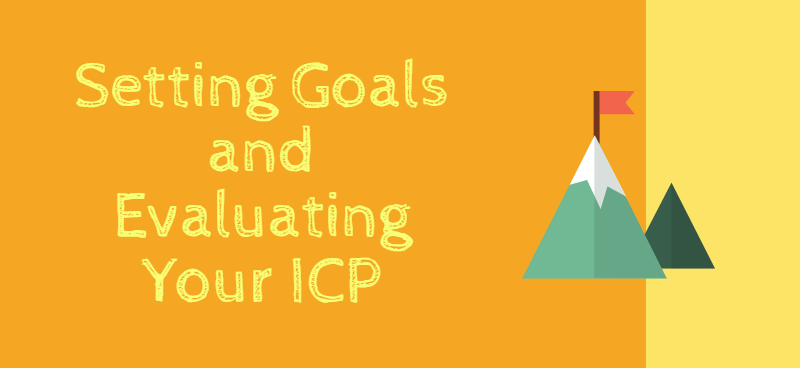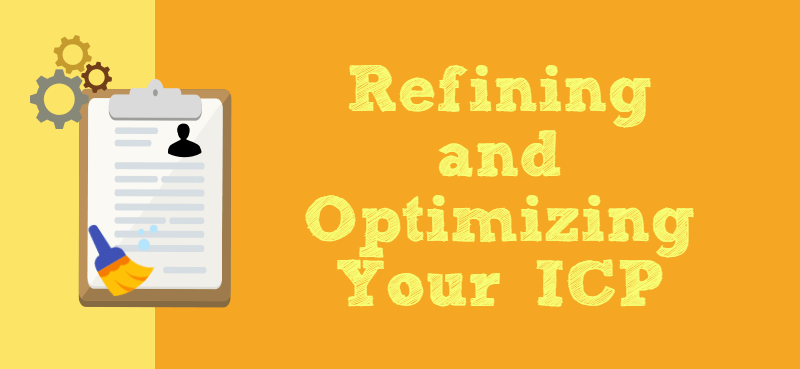Learn how to start selling to your ideal customers
You may have heard of a recent trend in sales this 2021, which is creating an “ideal customer profile” (ICP).
Maybe you’ve read about it or even gone through the process to create one when trying to learn how to start selling.
But creating an ICP is only half the battle.
Getting buy-in from your organization, implementing it across your sales team, and evaluating its performance is the next step.
Learning how to start selling effectively and track the progress of an ICP can have a big impact on your sales team’s success. Some major benefits include:
- Shorter sales cycle
- Higher average contract value
- Increased revenue
- Reduced churn rate
- Happier customers
In case you haven’t already jumped on the ICP bandwagon, here’s an easy step-by-step process to develop one quickly.
Once you’ve completed that process, you should have an ICP with:
- Industry
- Location
- Employee count
- Estimated revenue
- Any other characteristics you think are important for your ICP
The next step in learning how to start selling is to implement your ICP. This process is crucial, and when done effectively, can mean massive success for your sales team.
The rest of this post is dedicated to helping you successfully implement your new ICP. We’ll cover:
- Setting goals to evaluate your ICP
- Establishing sales and marketing alignment
- Implementing an ICP across your entire sales team
- Refining and optimizing your ICP over time
Set Goals and Evaluate Your ICP

An ICP should be created using a combination of quantitative and qualitative data.
Even so, it’s likely you’ll have to make some “best guesses,” especially when first implementing an ICP in your sales process.
Because of this, it’s important to set up a system to test and evaluate your ICP. As Peter Drucker once said, “what gets measured gets managed.
”
With a solid system in place you’ll be able to track your new ICP’s impact on your sales performance Share on XEven better, you’ll be able to refine and optimize your ICP over time by making data-driven decisions. Here’s a three-step process to evaluating your ICP:
1 Set a timeframe
Establish a timeframe to test the first iteration of your ICP. Typically, a period of four to six months works well.
However, based on your sales cycle and target customer, a different timeframe might work better.
For enterprise sales, a longer test cycle may be necessary to evaluate the effectiveness of an ICP.
2 Set a goal
Set a specific goal to work towards. Your goal should be unique to your sales process and team, but some examples include:
- Increase MRR by x%
- Generate x number of qualified leads
- Increase average deal size by x%
- Reduce customer churn by x%
Whichever goal you decide on, make sure it’s clearly communicated across your entire sales team.
3 Establish metrics
Based on the goal you set in step two, specify metrics you will use to track progress towards that goal.
Put systems in place to systematically track and monitor these metrics during your ICP test period.
Sales and Marketing Alignment

Sales and marketing alignment is critical when implementing an ICP.
Ideally, your marketing team would be involved in the process of formulating the ICP. At the very least, buy-in from marketing is critical.
When your sales and marketing teams are in sync, lead generation becomes easier.
Many marketers base their strategies on “buyer personas.”
So what exactly is the difference between an ICP and a buyer persona?
The ICP indicates the types of companies/accounts you should be targeting.
Buyer personas identify and define the types of buyers you should be targeting within those companies.
Once you’ve established buy-in, sales and marketing can work together to create buyer personas aligned with the ICP.
Implementing an ICP in Your Sales Team

The first step in any successful ICP implementation is to communicate it clearly across your sales team.
Explain the parameters you’ve outlined for the ICP and make a case for why an ICP will help your team crush sales goals.
Next, clearly explain the ICP test period, goals, and evaluation metrics you’ve decided on.
Ensure systems are in place to hold every team member accountable for these new sales goals.
1 Understand the Purchase Decision Making Process
Once your sales team is on board, work together with your marketing team to identify the key decision-makers involved in the purchase decision.
Buying behavior is the process by which customers become conscious of and define their needs; gather information on the most effective ways to meet these needs; assess different available alternatives; make a buying decision, and assess their purchases.
Further build out your buyer personas to include job title, rank, department, etc.
These buyer personas will help you identify and prospect the best leads at companies that match your ICP.
2 Discover Prospects
With buyer personas in mind, it’s time to identify companies that match your ICP.
Once you find companies that align with your ICP, you can discover key decision-makers from those companies.
These will be your prospects.
Discovering companies and prospects is usually the toughest part of implementing an ICP.
Luckily, there are many tech tools out there that can help you pinpoint prospects that perfectly match your ICP.
You can apply filters to discover companies and people to target using a prospect database or a lead generation software.
Sometimes a combination of good old-fashioned Google and LinkedIn search can do the trick.
Whichever method you choose, developing a list of target accounts and key decision-makers is key to implementing an ICP.
3 Connect With Prospects
Once you’ve identified prospects, who match your ICP, you can begin outreaching.
While automated email is a popular sales method, a more personalized approach is effective when using an ICP.
Because you already have key data insights on companies, you can leverage these in sales emails to make a more compelling case for your product.
Unlike traditional sales, which target a large volume of low-quality or unqualified leads, with an ICP, you will be targeting fewer leads, but those you do target will be high-quality.
This is why a high-touch, the personalized sales approach is more effective.
Use thorough company research to write personal sales emails. Share on XNo matter how you do it, in order to be effective, you need to nail your offer.
Refine and Optimize Your ICP

It’s important to remember that your ICP can and probably will change over time. When it comes to refining your ICP, here’re some tips to keep in mind:
1 Track your Progress in Milestones
Remember the timeframe and goals you set for your ICP? You don’t have to wait until the end of that timeframe to evaluate your ICP. In fact, it’s even better to evaluate your ICP at shorter intervals or “milestones.”
2 Follow the Data
When evaluating your ICP in milestones, make sure to look at the numbers.
Quantify and consider how the ICP is impacting your sales efforts. If you notice you’re not on track to meet your goals, it might be time to change your ICP.
Simply put: if you notice something isn’t working, make a change.
Likewise, if the numbers indicate a positive effect on your sales process, move forward with your ICP.
3 Evaluate Success
At the end of the ICP test timeframe, determine if you met your goal. If you didn’t meet your goal, you might want to consider fine-tuning your ICP or pivoting entirely. If the data points in the right direction, you may opt to extend your testing timeframe.
4 Test, Test, and Test Some More
Continuing to test, refine, and/or pivot is key to your sales team’s success in the long term. Always have metrics in place to track and evaluate the performance of your ICP.
Key-Takeaways
Some key takeaways from this guide on learning how to start selling include:
- Set a goal and testing period timeframe for your new ICP.
- Establish metrics to track progress towards your goal.
- Work with marketing to create buyer personas that correspond to your ICP.
- Use a tech tool to pinpoint prospects who match your ICP.
- Develop and implement a warm outreach strategy.
- Track progress towards your goal and refine your ICP as needed to meet sales targets.
Conclusion
The end goal is to find the best way on how to start selling to your ideal customer.
Finding a niche market, establishing trust with customers, doing research on customer needs and wants, and creating an effective marketing plan are all important steps in order to sell successfully.
With these four tips at your disposal, it should be easier than ever before to start selling! What tips do you have for people learning how to start selling to their ideal customers?
Want to help contribute to future articles? Have data-backed and tactical advice to share? I’d love to hear from you!
We have over 60,000 monthly readers that would love to see it! Contact us and let's discuss your ideas!

